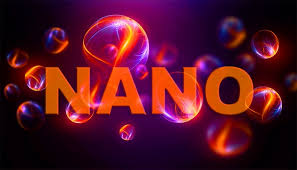A biological nanobot (nanobots) means that nanoparticles can repair cells with special tools and receptors at the molecular scale (PhD in Nano-Microelectronics)
Researcher and author: Dr. ( Afshin Rashid)
Note: For nanotechnology at the biological level, a nanorobot is a popular term for molecules with unique properties that enable them to be programmed to perform a specific task. These nanobots are a fact and are being actively researched and developed.
The programmable test properties of nucleic acids in the creation of nanoforms and logic nanomachines designed for various applications. For this reason, one of the most studied areas in the field of nanorobotics today is DNA assembly, especially a method called origami DNA. Robotics can be defined as the theory and application of robots, a completely independent electronic, electrical or mechanical device for activities such as manufacturing. Reduce the scale of that robot to a few billionths of a meter, and in short nanorobotics. It brings together several processes, including nano-manufacturing processes used to produce nanomotors, nano-actuators, nano-sensors and physical modeling at nano-scales.Nanorobotic manipulation technologies, including the assembly of nanometer-sized parts, the manipulation of biological cells or molecules, and the types of robots used to do so, are also components of nanobotics. Nanomotors are converted to controlled surface properties that cause twisting in conventional static optical fabrication systems, and this approach creates the initial stage for an operating system (nano load).
A biological nanobot (nanobots) means that nanoparticles can be designed to repair cells with special tools and receptors at the molecular scale to reach the target cell using blood flow and identify problems. Nanobots have the potential to protect the system meticulously by assembling and cloning. In fact, they are put into a process with an atomic or molecular structure to complete a cycle. But we built this micro-robot because of the complexities of the human body so that it can move between the arteries and veins of the body and study and identify diseases. Nano-robot is a controlled robotic system at the nanoscale and molecular scale. The tiny robot incorporates features such as usability in small spaces with high flexibility, the ability to function high and consistent in different situations is an energy source for nano-robots, including the kinetic energy of the fluid, such as blood, the beam of electromagnetic, temperature changes, which It is mediated by the increase and decrease of light and creates suitable vibrations that can now be used in various environmental environments. The important thing about medical nanobots is that they provide the driving force, which is mainly blood flow, and therefore should be done in compliance with patient safety tips. The information transmission system and control of the movement of nanobots in the body should also be such that it can be easily examined from outside the body. The reason why nobots are so important is their speed and performance in the face of viruses and pathogenic symptoms of nanobots that can detect a specific infection or virus in the body within 20 minutes.
Conclusion:
For nanotechnology - microelectronics at the biological level, a nanorobot is a popular term for molecules with unique properties that enable them to be programmed to perform a specific task. These nanobots are a fact and are being actively researched and developed.
Researcher and author: Dr. ( Afshin Rashid)
PhD in Nano-Microelectronics




